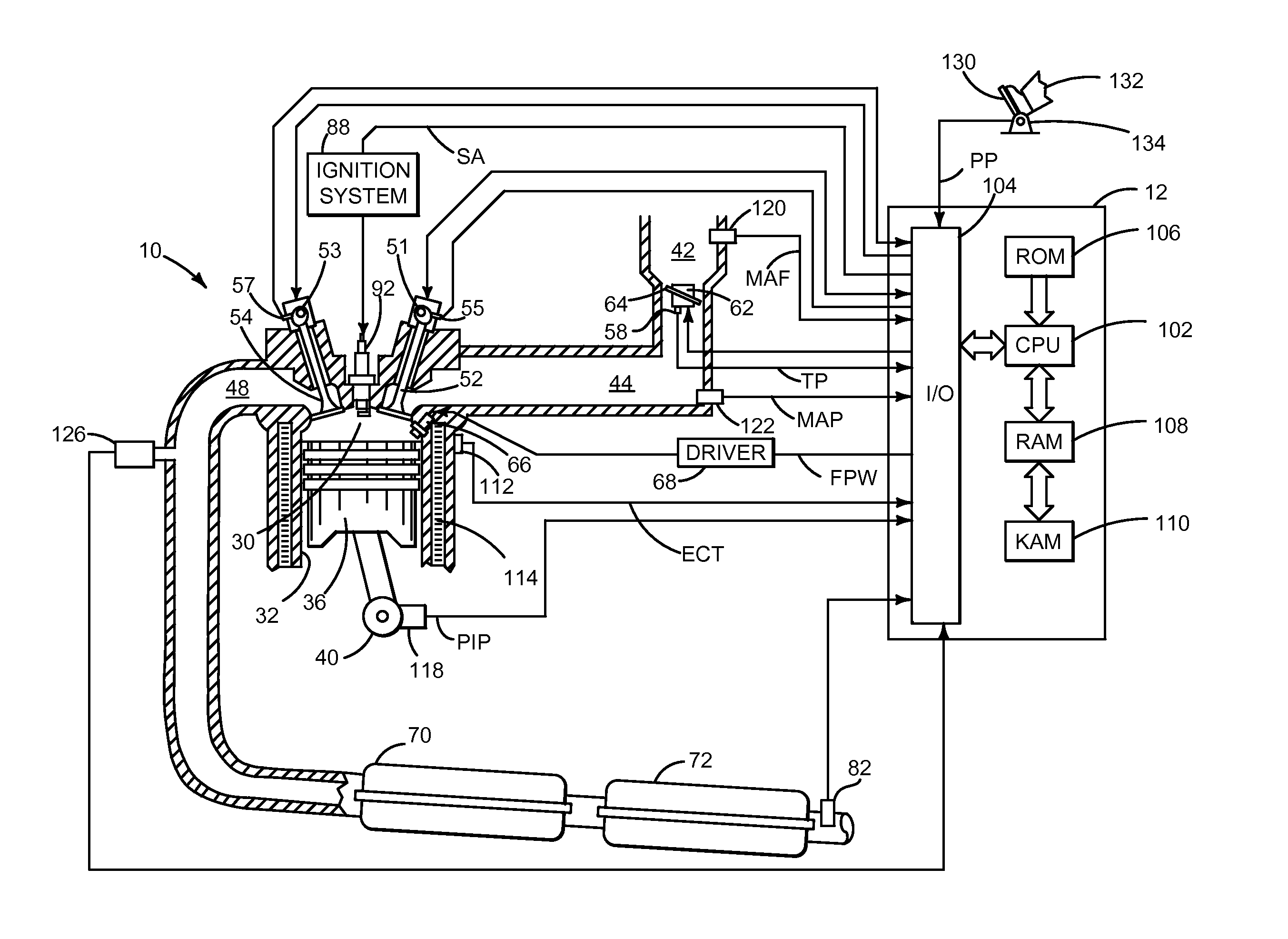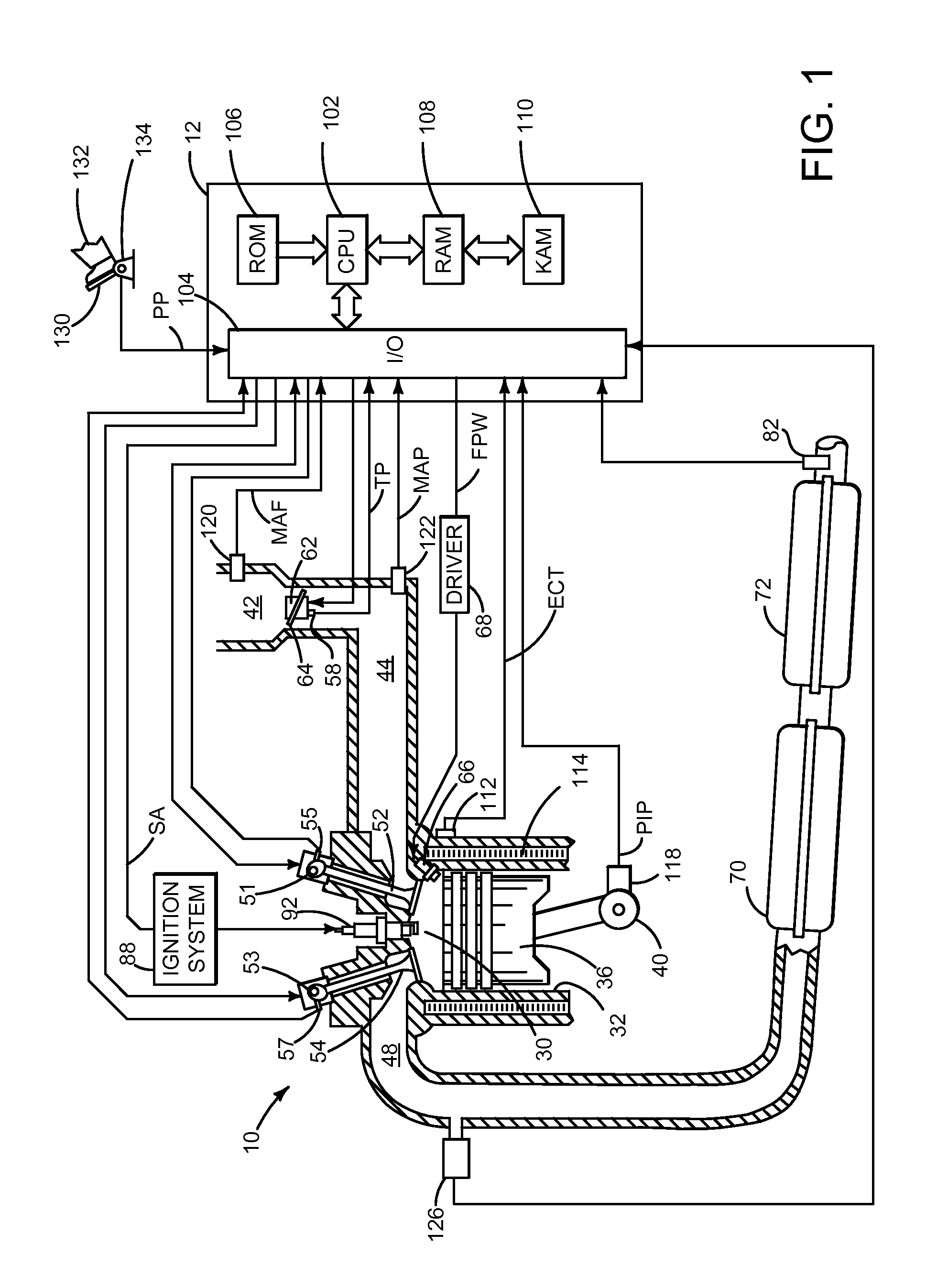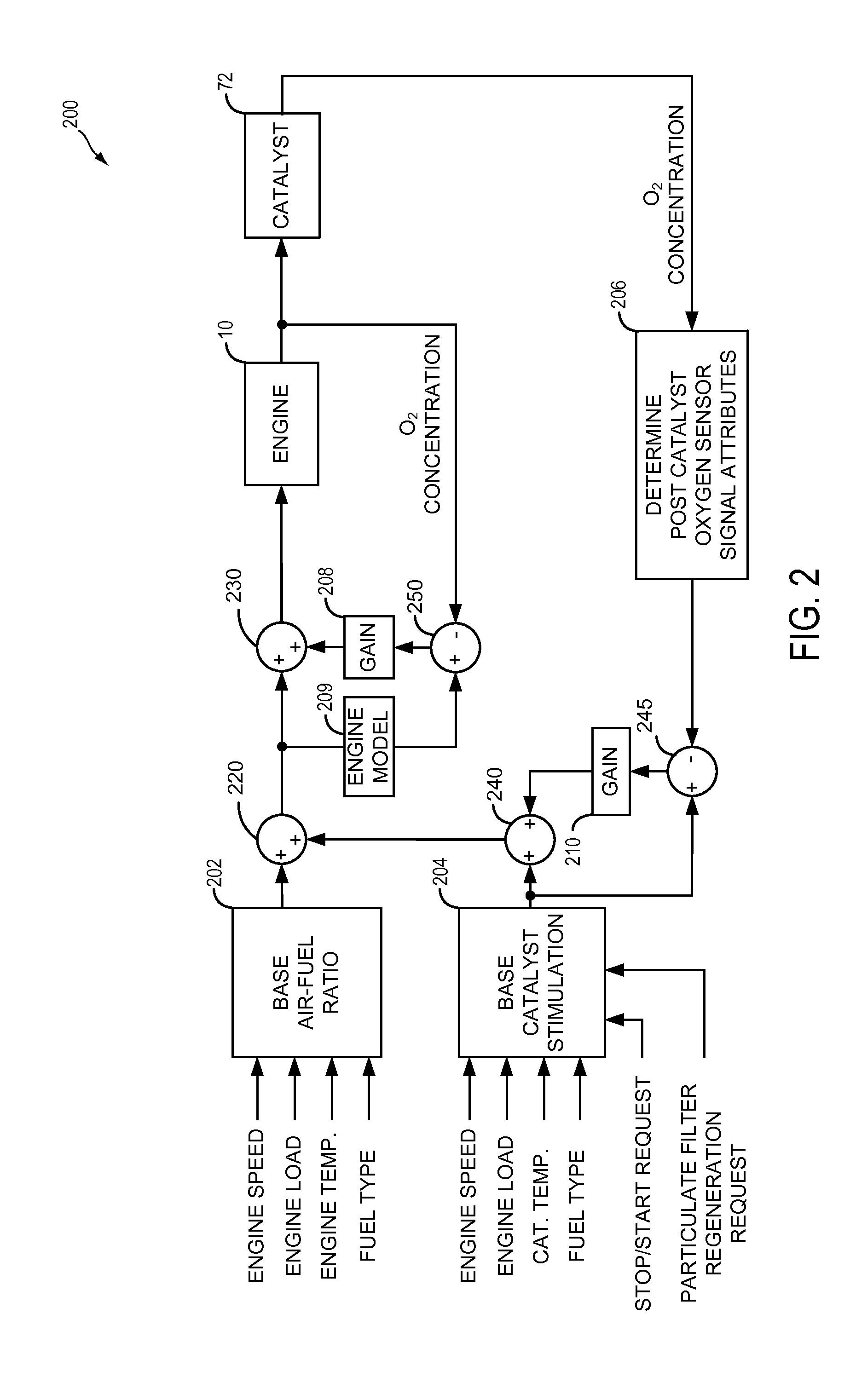Method for adjusting engine air-fuel ratio
a technology of air-fuel ratio and engine, which is applied in the direction of electrical control, process and machine control, instruments, etc., can solve the problems of undesirable disturbance of the amplitude and/or frequency of the post catalyst oxygen sensor output, the output of the post catalyst oxygen sensor is somewhat difficult to converge to the time, and the efficiency of the catalyst may degrade, etc., to reduce the regulated engine emission, promote catalyst efficiency, and reduce the catalyst light off time
- Summary
- Abstract
- Description
- Claims
- Application Information
AI Technical Summary
Benefits of technology
Problems solved by technology
Method used
Image
Examples
Embodiment Construction
[0014]The present description is related to adjusting an engine air-fuel ratio. In one non-limiting example, the engine may be configured as part of the system illustrated in FIG. 1. The engine air-fuel ratio may be adjusted via a controller as illustrated in FIG. 2. The system of FIG. 1 and the controller of FIG. 2 may combine to provide the signals illustrated in FIG. 3. The signals of FIG. 3 show how engine air fuel may be adjusted and how duty cycle and frequency information can be derived from output of a post catalyst oxygen sensor. FIG. 4 shows a method to adjust engine air-fuel ratio via executable instructions of the controller illustrated in FIG. 1.
[0015]Referring now to FIG. 1, internal combustion engine 10, comprising a plurality of cylinders, one cylinder of which is shown in FIG. 1, is controlled by electronic engine controller 12. Engine 10 includes combustion chamber 30 and cylinder walls 32 with piston 36 positioned therein and connected to crankshaft 40. Combustion...
PUM
 Login to View More
Login to View More Abstract
Description
Claims
Application Information
 Login to View More
Login to View More - R&D
- Intellectual Property
- Life Sciences
- Materials
- Tech Scout
- Unparalleled Data Quality
- Higher Quality Content
- 60% Fewer Hallucinations
Browse by: Latest US Patents, China's latest patents, Technical Efficacy Thesaurus, Application Domain, Technology Topic, Popular Technical Reports.
© 2025 PatSnap. All rights reserved.Legal|Privacy policy|Modern Slavery Act Transparency Statement|Sitemap|About US| Contact US: help@patsnap.com



